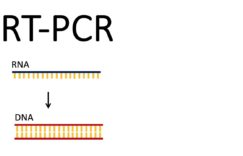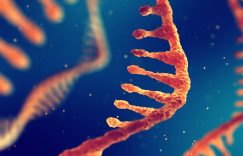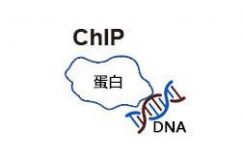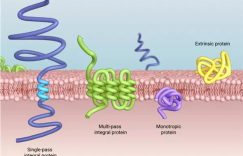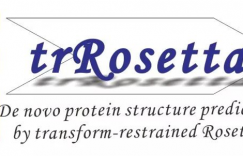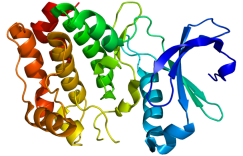随着人类基因组测序工作的完成,基因工程研究踏上了一个新的高度,也因此使得功能基因组学成为当今研究的一个热门课题,而作为该研究领域中的核心内容之一,在全基因组层面,通过研究蛋白质与DNA的相互作用来了解基因转录调控过程更是受到了广泛的关注。
基于芯片的ChIP-chip(Chromatin immunoprecipitationcombinedwith DNA tiling arrays)技术第一次出现在世人面前,大约是在15年前的一篇文献中,而那也是最早以全基因组图谱来展示小基因组生物(酵母)中蛋白质与DNA关系的文献之一1,2。如今,供应商们可以提供多种常见模式生物的嵌合阵列平台(tilingarray platform),并且,许多种生物信息软件也被开发出来用于做ChIP-chip分析3-6。
而随着过去几年第二代高通量测序技术的快速发展,染色质免疫沉淀技术(Chromatinimmunoprecipitation, ChIP)与新一代测序技术相结合,成为新的染色质免疫沉淀测序技术(Chromatinimmunoprecipitation followed by sequencing, ChIP-Seq),该新技术包含在全基因组范围内分析转录因子结合位点(transcriptionfactor binding sites,TFBS)、组蛋白修饰(histonemodification)、核小体定位(nucleosomepositioning)和DNA 甲基化(DNA methylation)的高通量方法7-11。
ChIP-seq技术主要包括两大部分:染色质免疫沉淀和高通量测序。该技术首先通过染色质免疫共沉淀技术特异性地富集所需蛋白结合的DNA 片段;接着建立起测序文库,运用新一代测序技术(next-generationsequencing,NGS)针对之前富集所得的DNA 片段进行高通量测序;最后将得到的数百万条序列标签精确定位到基因组上,以此获得全基因组范围内与组蛋白或转录因子等DNA 结合蛋白相互作用的DNA 区段信息。
对于所有基因组序列已知的生物,ChIP-Seq技术都可以研究其任何一种DNA 相关蛋白与其靶定DNA 之间的相互作用,并能确切得到每一个片段的序列信息。该技术提供了一种高分辨率、低噪音以及高覆盖率的手段,相比于传统的基于芯片的ChIP-chip,ChIP-Seq技术对于蛋白质结合位点的鉴定更加敏感和明确,并且所需材料也更少12,13。除此之外,ChIP-Seq技术在研究分析哺乳动物的基因组时拥有较高的性价比,当然,该技术会随着高通量测序技术价格的下降,而变得越来越具有性价比。
Reference:
1. Lee TI, Rinaldi NJ, Robert F, Odom DT, Bar-Joseph Z, Gerber GK, Hannett NM, Harbison CT, Thompson CM, Simon I, et al: Transcriptional Regulatory Networks in Saccharomyces cerevisiae. Science 2002, 298:799-804.
2. Ren B, Robert F, Wyrick JJ, Aparicio O, Jennings EG, Simon I, Zeitlinger J,Schreiber J, Hannett N, Kanin E, et al: Genome-Wide Location and Function of DNA Binding Proteins. Science 2000, 290:2306-2309.
3. Johnson WE, Li W, Meyer CA, Gottardo R, Carroll JS, Brown M, Liu XS: Model-based analysis of tiling-arrays for ChIP-chip. Procs Natl Acad Sci USA 2006, 103:12457-12462.
4.Qi Y, Rolfe A, MacIsaac KD, Gerber GK, Pokholok D, Zeitlinger J, Danford T, Dowell RD, Fraenkel E, Jaakkola TS, et al: High-resolution computational models of genome binding events. Nat Biotech 2006, 24:963-970.
5. Song J, Johnson WE, Zhu X, Zhang X, Li W, Manrai A, Liu J, Chen R, Liu XS: Model-based analysis of two-color arrays (MA2C). Genome Biol 2007, 8: R178-R178.
6. Droit A, Cheung C, Gottardo R: rMAT– an R/Bioconductor package for analyzing ChIP-chip experiments. Bioinformatics 2010, 26:678-679.
7. Barski A, Cuddapah S, Cui K, et al. High-resolution profiling of histone methylations in the human genome. Cell, 2007, 129 (4):823-837
8. Mikkelsen T S, Ku M, Jaffe D B, et al. Genome-wide maps of chromatin state in pluripotent and lineage-committed cells. Nature, 2007, 448 (7153): 553-560
9. Albert I, Mavrich T N, Tomsho L P, et al. Translational and rotational settings of H2A. Z nucleosomes across the Saccharomyces cerevisiae genome. Nature, 2007, 446 (7135): 572-576
10. Robertson G, Hirst M, Bainbridge M, et al. Genome-wide profiles of STAT1 DNA association using chromatin immunoprecipitation and massively parallel sequencing. Nat Methods, 2007, 4 (8): 651-657
11. Johnson D S, Mortazavi A, Myers R M, et al. Genome-wide mapping of in vivo protein-DNA interactions. Science, 2007, 316 (5830): 1497-1502
12. Adli M, Zhu J, Bernstein BE: Genome-wide chromatin maps derived from limited numbers of hematopoietic progenitors. Nat Meth 2010, 7:615-618.
13. Goren A, Ozsolak F, Shoresh N, Ku M, Adli M, Hart C, Gymrek M, Zuk O, Regev A, Milos PM, et al: Chromatin profiling by directly sequencing small quantities of immunoprecipitated DNA. Nat Meth 2010, 7:47-49

